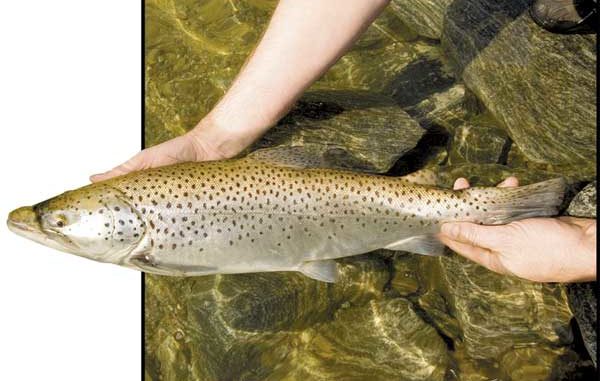
Early spring is an exciting time for fishermen everywhere; air and water temperatures are on the rise, the fish are on the move, and cabin fever is quickly becoming a distant memory.For those anglers who get their thrills by targeting trophy trout in South Carolina’s Lake Jocassee, trolling usually means braving bitterly cold weather and biting wind to achieve any level of success. But spring represents the best of two worlds for these anglers — warmer, comfortable fishing weather and even hotter fishing.
Lake Jocassee is a well-known, legitimate trophy trout fishery. Both the South Carolina brown and rainbow trout state records, 17.6 and 11.3 pounds, respectively, were caught in Jocassee’s cold, deep waters. Even an average-sized catch of two or three pounds would be considered a real trophy in any southeastern trout stream or river.
Slow trolling is the preferred angling for these trout. Spin casting and even fly-fishing in shallow water will produce a fish from time to time, but most of those caught are sub-legal fish. Only trout 15 inches or longer are allowed to be legally kept.
During late fall and winter, most of the fish have migrated up into the lake’s river arms and inlets. By the time spring arrives, they have moved back to the main body of the lake and have taken refuge around the clearly defined thermocline. This makes locating fish much easier than in the fall and winter months, and it makes it the time to effectively reach these fish, before they head for prohibitively deep water in the summer.
Fish should first be located with graphs and fishfinders in water 20 to 50 feet deep. Open water near dropoffs or submerged islands and humps are likely areas to find trout. Fishing blindly over open water rarely results in any success. Fish must be located before targeting them at the right depth.
Trolling spoons and small plugs is the most popular and effective technique for taking Jocassee trout. Flat lining with lead-core line or heavy sinkers can get lures down deep enough to catch fish during spring, but downriggers are more effective at getting the lure at precisely the proper depth.
Thin, lightweight flutter spoons with lots of wobble action are deadly on these fish. Badcreek, Doctor, and Sutton spoons are favorites of local anglers. The smaller-sized spoons, two to three inches long, are preferred over larger sizes, and silver or a silver/copper color combination are old stand-bys.
Getting the lures to the right depth is important, but trolling speed is equally crucial. A boat speed of 1 to 1.5 miles per hour for brown trout and 2 to 2.5 miles per hour for rainbow trout are required for consistent success. With wind speed and direction altering the pace slightly, a good average boat speed that most anglers try to maintain is about 1.5 miles per hour.
Trolling with live bait is another effective method for taking Jocassee trout. Live herring, shad, or minnows will often take fish when artificial lures fail. This is particularly true when fish become sluggish immediately after a cold front.
Experts agree that blueback herring is the most-productive live bait, with 3-inch minnows a second choice. Herring should be brought in from elsewhere or purchased before reaching the lake, since the use of cast nets is illegal on Jocassee.
Live bait can be lowered to the desired depth and either drifted or slowly trolled through areas holding fish.
Lake Jocassee trout are managed with a 15-inch size minimum and 5-fish daily creel limit. Corn, fish eggs, cheese, or any imitations are prohibited as bait.
Trolling is certainly not for everyone, but it is a good diversion after wearing your arm out casting for spring bass. If nothing else, the mountain beauty of Lake Jocassee offers some amazing scenery for a boat ride in perfect spring weather — fish or no fish.



Be the first to comment